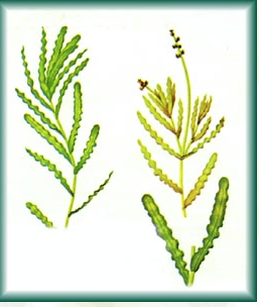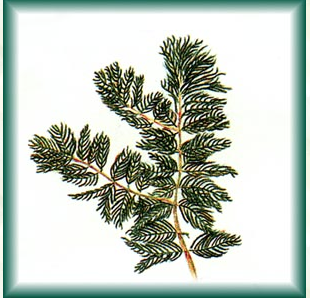Aquatic plants
There are a number of pond weeds which grow in Dudley Pond. Some are native and pose no harm.
Bladderwort
Bladderwort is a free floating plant without any visible roots. The leaves are finely placed along the stem with small bladder like structures on the leaves. These bladders act as traps to capture small aquatic organisms. This plant is common throughout the United States.
Curley leaf
Description : Leaves are thin with veins plainly visible. It commonly grows early in the spring and dies back during midsummer. Fruits are borne in spikes above the water surface. Leaves are alternately arranged on the stem. Common throughout the U.S. in both fresh and brackish water.
Eurasian Water Milfoil (Myriophyllum spicatum)
Description : Leaves in whorls of 4, with 14-20 pairs of leaf divisions. Stalk of tiny, reddish flowers may extend above or on the water surface. Plant may reach lengths of 10 feet or more. Plant stems and leaves may become calcified in hard water areas.
This is an exotic plant, introduced to the U.S. in the 1940's by the aquarium industry. It is rapidly becoming a major nuisance throughout North America. It is capable of rapid spreading, mainly by fragmentation of plant parts. Each fragment is capable of growing roots and eventually developing into new plant. Removal of fragments from boat trailers and along shorelines is advised to prevent its spread into new areas. Eurasian Milfoil is quite competitive with native species and may completely dominate a pond or lake within a few years after introduction. Due to the plant's ability to form dense growths, water use activities may become severely impaired. These plants are of little value to wildlife or fisheries.
This is an exotic plant, introduced to the U.S. in the 1940's by the aquarium industry. It is rapidly becoming a major nuisance throughout North America. It is capable of rapid spreading, mainly by fragmentation of plant parts. Each fragment is capable of growing roots and eventually developing into new plant. Removal of fragments from boat trailers and along shorelines is advised to prevent its spread into new areas. Eurasian Milfoil is quite competitive with native species and may completely dominate a pond or lake within a few years after introduction. Due to the plant's ability to form dense growths, water use activities may become severely impaired. These plants are of little value to wildlife or fisheries.


